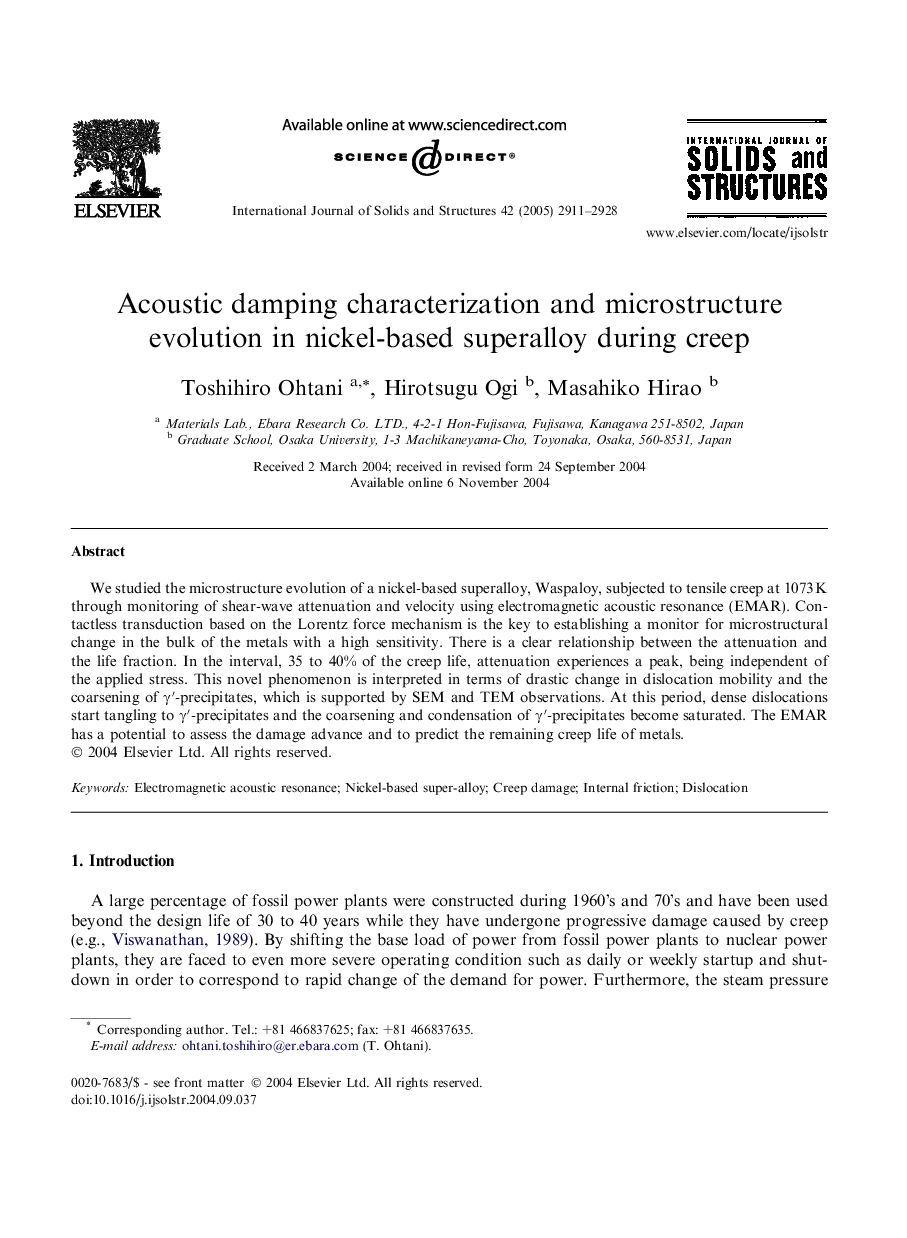| Article ID | Journal | Published Year | Pages | File Type |
|---|---|---|---|---|
| 280772 | International Journal of Solids and Structures | 2005 | 18 Pages |
We studied the microstructure evolution of a nickel-based superalloy, Waspaloy, subjected to tensile creep at 1073 K through monitoring of shear-wave attenuation and velocity using electromagnetic acoustic resonance (EMAR). Contactless transduction based on the Lorentz force mechanism is the key to establishing a monitor for microstructural change in the bulk of the metals with a high sensitivity. There is a clear relationship between the attenuation and the life fraction. In the interval, 35 to 40% of the creep life, attenuation experiences a peak, being independent of the applied stress. This novel phenomenon is interpreted in terms of drastic change in dislocation mobility and the coarsening of γ′-precipitates, which is supported by SEM and TEM observations. At this period, dense dislocations start tangling to γ′-precipitates and the coarsening and condensation of γ′-precipitates become saturated. The EMAR has a potential to assess the damage advance and to predict the remaining creep life of metals.
